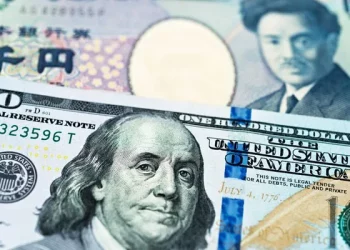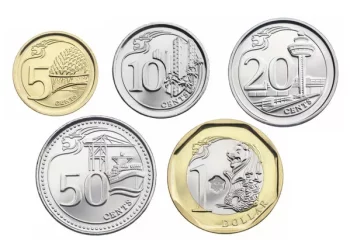In the world of foreign exchange trading, currencies fluctuate constantly, influenced by numerous factors such as economic data, geopolitical events, and market sentiment. For traders and businesses engaging in international transactions, staying updated on the buying rate of a currency is crucial. In this article, we focus on the New Zealand Dollar (NZD), its significance in the forex market, and the factors that influence its buying rate.
The New Zealand Dollar (NZD): An Overview
The New Zealand Dollar (NZD) is the official currency of New Zealand, which is a developed island nation located in the South Pacific Ocean. The currency is symbolized as NZD and sometimes referred to as the “Kiwi,” a nickname derived from New Zealand’s national bird, the kiwi. It is one of the most traded currencies in the world, ranking among the top 10 most traded currencies in the forex market.
New Zealand, with its stable economy and solid trade relationships, plays a significant role in the forex market. The NZD is primarily influenced by commodity exports, especially agricultural goods, and by the country’s interest rates, which are controlled by the Reserve Bank of New Zealand (RBNZ).
In foreign exchange markets, the buying rate refers to the exchange rate at which a particular currency, such as the New Zealand Dollar, is purchased by banks, institutions, or individuals. This buying rate reflects how much of another currency, such as the US Dollar (USD), is needed to purchase one unit of the New Zealand Dollar.
How is the NZD Buying Rate Determined?
The buying rate of the New Zealand Dollar is primarily determined through the principles of supply and demand. Various factors impact the demand for the New Zealand Dollar, including:
Interest rates: The Reserve Bank of New Zealand sets the official cash rate (OCR), which directly influences interest rates in the country. Higher interest rates often attract foreign investment, leading to increased demand for NZD.
Commodity exports: New Zealand’s economy is heavily reliant on its agricultural exports, including dairy, meat, and wool. When the global demand for these commodities rises, the demand for the New Zealand Dollar also increases as foreign buyers exchange their currencies for NZD to make purchases.
Economic performance: The overall economic health of New Zealand has a direct impact on the buying rate of the New Zealand Dollar. A growing economy, low unemployment, and high productivity tend to boost the value of the NZD.
Global risk sentiment: The NZD is considered a risk-on currency, meaning that it tends to perform well during periods of global economic stability and growth. When investors are optimistic about the global economy, they are more likely to invest in riskier assets, including currencies like the NZD.
Geopolitical events: Political stability within New Zealand and its trading partners also affects the NZD. Geopolitical instability can cause fluctuations in currency prices as investors adjust their portfolios to account for potential risks.
The NZD Buying Rate and Its Importance
The buying rate of the New Zealand Dollar is essential for several stakeholders in the forex market:
Traders: Forex traders monitor the buying rate of the NZD as part of their strategy to profit from fluctuations in exchange rates. They use tools like technical analysis, fundamental analysis, and news events to predict movements in the NZD buying rate.
Businesses: Companies engaged in international trade often have to deal with currency exchange. The buying rate of the NZD affects the cost of importing goods from New Zealand or the revenue generated from exports to New Zealand.
Investors: Investors seeking to gain exposure to New Zealand’s economy may buy NZD to participate in the country’s financial markets. The buying rate influences the timing and profitability of such investments.
Tourists and Travelers: The buying rate of the NZD is crucial for those traveling to New Zealand or engaging in cross-border tourism. A favorable exchange rate may allow tourists to get more for their money, while an unfavorable rate may make travel more expensive.
NZD Buying Rate Trends
The buying rate of the New Zealand Dollar against major currencies such as the US Dollar (USD), the Euro (EUR), the British Pound (GBP), and others fluctuates regularly. Traders and investors often observe these fluctuations for opportunities to profit.
To understand the trends in the NZD buying rate, it is helpful to monitor the following:
Interest rate differentials: As mentioned earlier, the interest rates set by the Reserve Bank of New Zealand relative to the rates in other countries, particularly the United States, heavily influence the NZD’s value. When the RBNZ raises interest rates while other central banks keep theirs unchanged, the NZD tends to appreciate.
Commodity prices: New Zealand is a major exporter of commodities like dairy and meat. When global commodity prices rise, the demand for NZD typically increases, boosting its value. Conversely, when commodity prices fall, the demand for NZD may decrease, lowering its buying rate.
Global risk appetite: The NZD is often classified as a “risk-on” currency. During times of global economic uncertainty or market volatility, investors tend to move their capital into safer assets like the US Dollar, Swiss Franc, or Japanese Yen. This can lead to a depreciation of the NZD, as demand falls.
Economic indicators: The NZD’s buying rate is closely linked to New Zealand’s economic indicators such as GDP growth, inflation, and employment data. Strong economic data typically strengthens the NZD, while weaker data can have the opposite effect.
What is the NZD Buying Rate Today?
To find out the exact buying rate of the New Zealand Dollar today, one would need to consult real-time forex data from a reputable financial source, such as a bank, a currency exchange service, or a forex trading platform.
It’s important to note that exchange rates fluctuate continuously, often even within a single day. The buying rate will differ based on the time of day, the currency pair in question, and where the transaction is taking place (i.e., whether it is in a physical bank, via an online exchange, or on a forex trading platform).
How to Monitor the NZD Buying Rate
For those interested in tracking the buying rate of the New Zealand Dollar, several tools and platforms can help:
Forex Brokers: Online forex brokers provide real-time exchange rates for a wide range of currency pairs, including the NZD. These platforms allow traders to monitor price movements and execute trades based on the most up-to-date rates.
Currency Converter Apps: Many currency conversion apps and websites offer live exchange rates, including the buying rate of the NZD against various currencies. These apps allow users to quickly convert NZD to other currencies and vice versa.
Bank Websites: Commercial banks provide the buying and selling rates for currencies, including the NZD. Banks may offer slightly different rates than those found on trading platforms or currency converter apps, as they account for transaction fees and spread margins.
Financial News Websites: Reputable financial news websites, such as Bloomberg, Reuters, or MarketWatch, provide updates on the performance of the New Zealand Dollar, including its buying rate against other major currencies. These websites may also offer analysis on factors driving the exchange rate.
Central Bank Announcements: The Reserve Bank of New Zealand’s announcements regarding interest rates, economic forecasts, and other policy decisions can have a significant impact on the buying rate of the NZD. Traders and businesses alike monitor these announcements to anticipate future movements in the currency.
Factors to Consider When Trading the NZD
Trading the NZD requires an understanding of both the technical and fundamental factors that affect its value. Here are some key considerations:
Interest rate expectations: Keep an eye on the Reserve Bank of New Zealand’s monetary policy. The NZD tends to appreciate when the central bank raises interest rates, as higher rates attract foreign investment.
Commodity price trends: New Zealand is a major exporter of agricultural commodities, and its currency is closely tied to the performance of global commodity markets. When commodity prices rise, the NZD often strengthens.
Economic data releases: Pay attention to key economic data, such as GDP growth, inflation, and unemployment figures. Strong economic performance is typically reflected in a stronger NZD.
Geopolitical events: Political instability or global economic shocks can lead to risk-off sentiment, causing the NZD to depreciate as investors seek safer assets.
Market sentiment: The NZD is a risk-sensitive currency, meaning that it tends to perform well when global economic conditions are favorable. Conversely, it can struggle during times of market uncertainty.
Conclusion
The New Zealand Dollar (NZD) is an important currency in global forex markets, and its buying rate is influenced by a variety of factors, including interest rates, commodity exports, economic data, and global risk sentiment. Whether you are a trader, investor, business owner, or traveler, understanding the buying rate of the NZD is crucial for making informed decisions.
To track the NZD buying rate today, make use of real-time forex data from reliable sources. Stay informed about the factors that impact currency values, and consider the wider economic environment when making currency exchanges or investment decisions.
With the ever-changing nature of the forex market, keeping an eye on the NZD’s buying rate will allow you to navigate the currency markets more effectively and capitalize on favorable trends.
Related Topics:



























